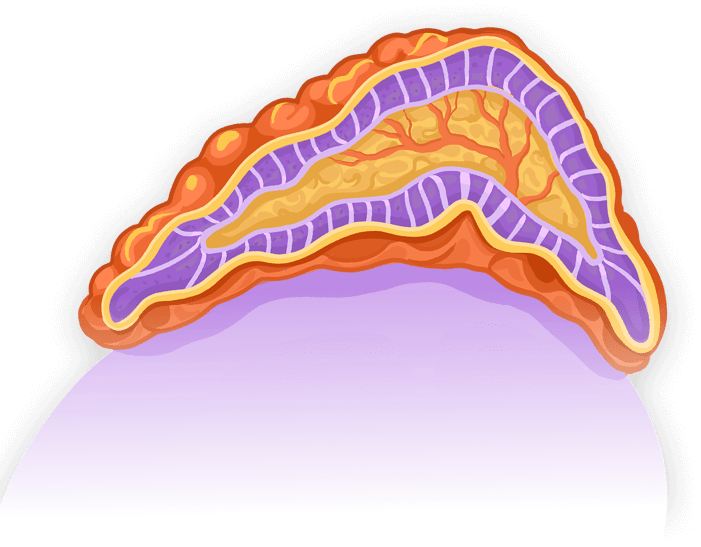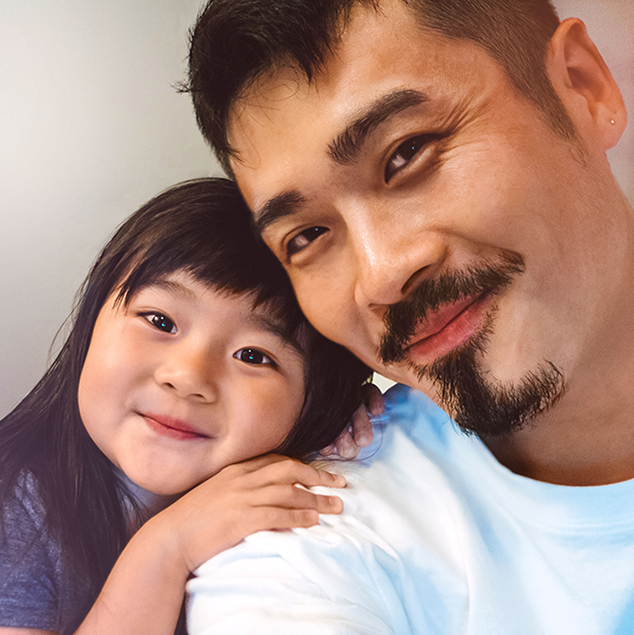MILESTONE: CRENESSITY Studied Through 12 Months
Continued efficacy and safety observed in the longest and largest-ever classic CAH clinical trial program1,4-8
CRENESSITY is a paradigm shift. I really like the idea that after years we have another option to add for our patients.”
CRENESSITY is a paradigm shift. I really like the idea that after years we have another option to add for our patients.”
A BREAKTHROUGH TREATMENT
CRENESSITY works toward rebalancing the HPA axis in classic CAH
CRENESSITY improves androgen control and allows for GC dose reductions, enabling a transformational approach to managing classic CAH.1
MULTIPLE TREATMENT EFFECTS
Control adrenal androgens
Reduce GC doses1-4
CRENESSITY can help you do both by managing androgens differently
CRENESSITY was studied in the largest and longest-ever clinical trial program for a classic CAH treatment. Efficacy in both children and adults was evaluated based on:
- Reduction in androstenedione levels
- Reduction in GC doses
Demonstrated safety Profile
Studied in pediatric and adult patients1-3
Most common adverse reactions in children taking CRENESSITY were headache, abdominal pain, fatigue, nasal congestion, and epistaxis. Most common adverse reactions in adults taking CRENESSITY were fatigue, headache, dizziness, arthralgia, back pain, decreased appetite, and myalgia.


- *A total of 3% of children treated with CRENESSITY and no placebo-treated patients discontinued treatment because of adverse reactions of abdominal pain, myalgia, and dizziness. A total of 3% of adults treated with CRENESSITY and no placebo-treated patients discontinued treatment because of adverse reactions of restlessness, apathy, dyspepsia, nausea, and vomiting. One adult discontinued during the randomized phase. Three additional adults and two children discontinued after the randomized phase. One additional patient withdrew from CAHtalystTM Pediatric.


ACCESS SIMPLIFIED
Dedicated support for those prescribed CRENESSITY
Personalized support at every step to ensure timely access, with most patients paying $10 or less a month for CRENESSITY.*
- *Additional terms and conditions apply.
REFERENCES
- Crenessity. Package insert. Neurocrine Biosciences, Inc.
- Sarafoglou K, Kim MS, Lodish M, et al. Phase 3 trial of crinecerfont in pediatric congenital adrenal hyperplasia. N Engl J Med. 2024;391(6):493-503. doi:10.1056/NEJMoa2404655
- Auchus RJ, Hamidi O, Pivonello R, et al. Phase 3 trial of crinecerfont in adult congenital adrenal hyperplasia. N Engl J Med. 2024;391(6):504-514. doi:10.1056/NEJMoa2404656
- Neurocrine Biosciences announces FDA approval of CRENESSITY (crinecerfont), a first-in-class treatment for children and adults with classic congenital adrenal hyperplasia. News release. Neurocrine Biosciences. December 13, 2024. Accessed August 7, 2025. https://neurocrine.gcs-web.com/news-releases/news-release-details/neurocrine-biosciences-announces-fda-approval-crenessitytm
- Jeha GS, Newfield RS, Geffner ME, et al. Crinecerfont maintains reductions in serum androstenedione levels and glucocorticoid doses in children and adolescents with classic congenital adrenal hyperplasia: 1-year results from the CAHtalyst™ Pediatric Study. Presented at: Pediatric Endocrine Society Annual Meeting (PES 2025); April 30–May 3, 2025; San Francisco, CA.
- Vaid S, Merke DP, Salam M, et al. Crinecerfont improves reproductive hormones in classic congenital adrenal hyperplasia: 1-year results from the CAHtalyst™ Adult Study. Poster presented at: American Association of Clinical Endocrinology Annual Meeting; May 15-17, 2025; Orlando, FL.
- Sarafoglou K, Lekarev O, Loechner K, et al. Crinecerfont shows favorable trends in improving clinical outcomes in children and adolescents with classic congenital adrenal hyperplasia: 1-year results from the CAHtalyst™ Pediatric Study. Poster presented at: Pediatric Endocrine Society Annual Meeting; May 15-18, 2025; National Harbor, MD.
- Auchus RJ, Hamidi O, Bancos I, et al. Crinecerfont improves clinical outcomes in adults with classic congenital adrenal hyperplasia: 1-year results from the CAHtalyst™ Adult Study. Poster presented at: Endocrine Society Annual Meeting; July 12-15, 2025; San Francisco, CA.







